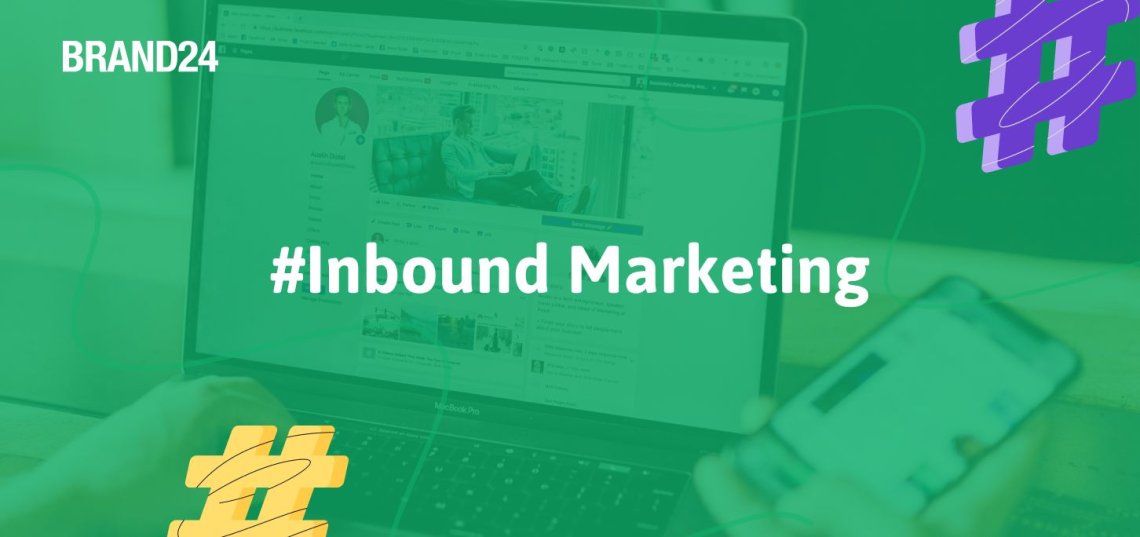10 Tips to Make Your Inbound Marketing Strategy More Effective
Table of contents
Strategically planned marketing will help you optimize customer acquisition costs. Here are 10 tips for improving your inbound marketing strategies and upgrading content campaigns.

Inbound marketing is a powerful tool for any business, large or small. It helps to drive leads and increase conversions, which ultimately leads to increased sales. However, without an effective inbound marketing strategy, your efforts may not be as successful as you’d like.
To get the most out of your inbound marketing strategy, here are 10 tips you can use to make it more effective. By following these tips, you’ll be able to maximize your marketing efforts and drive more leads and conversions. With an effective inbound marketing strategy in place, you’ll be able to reach more customers and grow your business.
10 tips for more effective inbound marketing:
- 01 Define your target audience
- 02 Research and analyze your competitors
- 03 Develop buyer personas
- 04 Utilize content marketing
- 05 Leverage social media
- 06 Create a process for lead nurturing
- 07 Optimize for search
- 08 Use A/B testing
- 09 Track results and measure success
- 10 Refine and adjust your strategy
01 Define your target audience
First and foremost, you need to define your target audience.
Understanding your target audience is the basis for all of your other marketing strategies. You need to know who you want to reach, what they want, and what they need.
Knowing your potential customers, you can tailor your inbound marketing efforts and focus them where they’ll have the most significant impact.
To define your target audience, you can research and analyze your competitors. Take some time to review your competitors’ websites. What type of people visits these websites? What do they like about these websites? What do they dislike? This type of research will give you an excellent foundation for a successful inbound marketing strategy.
Track online mentions of your company with Brand24! Click the button for the free trial.
02 Research and analyze your competitors
You can also research your competitors to learn more about your target audience. Conducting competitive analysis can help you gain valuable insights about your target audience.
By analyzing your competitors’ websites and marketing efforts, you can determine what types of people are interested in your products and services, which can help you to tailor your inbound marketing strategy.
Competitive analysis can also provide information on what your competitors are doing well and where they may fall short. This can help you to determine what you should be doing differently or what you need to do better. Knowing what your competitors are doing and what they’re not doing can help you create a successful inbound marketing campaign.
Read also: Competitive benchmarking
03 Develop buyer personas
Once you’ve defined your target audience, you can create buyer personas.
A buyer persona is a fictional profile of a typical customer. It highlights significant information about the specific type of customer that you want to attract, such as their interests, their needs, their problems, and their goals. Creating buyer personas is a great way to focus your efforts and identify the best customers to target in inbound marketing campaigns.
Once you have personas determined, you can tailor your inbound marketing efforts to appeal to these specific types of customers. By creating a buyer persona, you’ll be able to attract the right kinds of customers and avoid burning your work efforts on people who are not in your focus group. This way, you won’t waste time and resources on marketing efforts that may not be as effective.
With buyer personas in place, you can create more targeted relevant content, such as blog posts, videos, and webinars, that appeal to the interests of potential customers. Whenever you create a new piece of content, have one of the personas in mind and make it especially for them.
04 Utilize content marketing
Content marketing is one of the best strategies you can use to attract new leads and increase conversions. It involves creating and publishing blog posts, videos, webinars, eBooks, and other forms of content designed to solve your target audience’s problems and help them to achieve their goals.
By creating content that addresses your audience’s pain points, you can position yourself as a helpful resource and position your business as an authority in your industry. This type of marketing is also very scalable, meaning you can create a lot of content over time and publish it over various platforms. As long as you’re consistent with your inbound marketing efforts, you’ll be able to see results over time.
Content marketing is an inevitable part of all inbound marketing strategies and will help you gain a lot of clients organically.
05 Leverage social media
Another effective strategy you can use in your inbound marketing strategy is social media marketing. Social media can be a great way to attract new customers. But most importantly, it’s an awesome way of engaging with your current clients.
You can increase brand awareness and drive more leads and conversions by creating a social media strategy and implementing it across various social media platforms, such as Facebook, Instagram, and Twitter.
By scheduling posts across multiple platforms and engaging with your audience, you can drive additional traffic to your website.
Use Brand24 for social media monitoring. Free 14-day trial & no credit card required.
06 Create a process for lead nurturing
One of the most important aspects of inbound marketing is lead nurturing.
Lead nurturing refers to the process of slowly guiding potential customers through their buying journey and converting them into customers. By creating a lead nurturing strategy, you can slowly build a relationship with your potential customers and help them to make the decision to buy from you.
Lead nurturing within inbound marketing can help you to increase the number of leads that turn into customers. You can send your potential customers helpful and informative content by setting up a lead nurturing campaign. This can include tips, guides, and other types of valuable information.
07 Optimize for search
Another essential aspect of inbound marketing is optimizing for search. This refers to the process of optimizing your website for search engines, such as Google or Bing.
By optimizing your website for search engines, you’ll be able to increase your organic traffic and drive more leads and conversions. Optimization used to mean just adding relevant keywords and gaining backlinks to your website, but that’s not entirely true anymore.
Yes, keywords and backlinks are an important part of SEO, but to successfully rank at the top of SERPs (Search Engine Results Pages), your content needs to be optimized for users first. Google actually has suggestions and guidelines for healthy content creation, so if you are new to SEO, you should probably read that.
By optimizing your site for targeted keywords, your inbound marketing focuses on a more relevant audience. A good SEO strategy will bring you more relevant traffic and, ultimately, more conversions.
Read more: SEO: Content Creation or Optimization – Which is Better?
08 Use A/B testing
Another vital aspect of inbound marketing is A/B testing. This refers to the process of testing two different versions of a piece of content and seeing which one performs better.
By creating two different versions of a blog post or a piece of content, like an image or a video, you can see which one generates more leads and conversions. This can help you to determine which version works best and provides your audience with the best experience.
By A/B testing different pieces of content, you can optimize your inbound marketing efforts and create more effective content. This can help you to reach more customers and increase your conversion rate.
At Brand24, we do A/B testing all the time! It’s also part of our inbound strategy.
09 Track results and measure success
As you implement your inbound marketing strategy, you’ll want to track your results and measure your success.
Tracking your results will allow you to determine which strategies are working and which should be abandoned or altered. This can help you to make adjustments and improve your inbound marketing attempts.
There are numerous tools that will help you measure your inbound marketing success. Here’s a list of social media analytics tools you can try, and you’re more than welcome to test Brand24 – media monitoring software – for free! With Brand24, you can track mentions about your brand or selected keywords online. It’s a useful tool for every inbound marketer, PR specialist, or social media manager.
Brand24 is a tool that tracks online mentions of your company.
10 Refine and adjust your strategy
As you track your results and measure your inbound marketing strategies, you can then refine and adjust your efforts as needed.
Use inbound marketing tools to define if your campaigns are successful or not. Be sure to set goals for each campaign so you’ll know what to measure.
After each campaign, you should measure the success, the number of conversions, the amount of traffic and buzz it generated, etc., and use it to improve your inbound marketing.
Remember, there are no perfect inbound marketing strategies and no template to guarantee 100% success. Each campaign should be carefully tailored to your company and target market.
Wrap up
I hope that this guide will help you to create more valuable content to boost inbound marketing in your organization. Use these tips, and I’m sure the number of conversions will skyrocket, and the sales team will have a lot of hot leads to process.
A successful inbound marketing strategy needs a lot of planning and tweaking. It’s hard work, but it pays well. Hopefully, after reading this article, your inbound efforts will be lucrative!
FAQ
What is inbound marketing vs outbound marketing?
Inbound and outbound marketing are two fundamental approaches in the field of marketing, each with its own strategies and methods.
Inbound Marketing is a business methodology that attracts customers by creating valuable content and experiences tailored to them. This approach aims to draw customers to your brand organically rather than going out to get their attention. Inbound marketing strategies include content marketing, SEO, social media marketing, and more. For instance, you might use an email marketing campaign to provide helpful content to your subscribers, building trust and encouraging them to do business with you.
Key elements of an inbound marketing approach include:
- Content Creation: Creating and distributing content that solves problems or provides value to your target audience.
- Lifecycle Marketing: Recognizing and addressing the needs of customers at different stages of the buying cycle.
- Personalization: Tailoring content and experiences to individual customers’ needs and interests.
- Multi-channel presence: Meeting customers where they are, be it on social media, search engines, or their email inbox.
Outbound Marketing, on the other hand, is a more traditional form of marketing where a company initiates the conversation and sends its message out to an audience. Outbound marketing is often what people think of when they hear the term “marketing” – it includes activities like television commercials, radio ads, print advertisements, trade shows, and cold calling.
Key elements of an outbound marketing approach include:
- Interruption-based: The aim is to catch the viewer’s attention and interrupt their current activity with a promotional message.
- Mass audience targeting: Rather than focusing on a specific group of people, outbound marketing strategies often target a broad audience.
- Direct and straightforward: The messaging in outbound marketing is typically direct, making it clear that it is a marketing message.
Both inbound and outbound marketing have their places in a comprehensive marketing strategy. Inbound marketing is effective for building long-term customer relationships and generating organic traffic and leads, while outbound marketing can be useful for reaching a broad audience quickly and creating brand awareness.
What is an example of an inbound strategy?
One of the most effective examples of an inbound strategy is Search Engine Optimization (SEO). SEO involves optimizing your website and content with relevant keywords, high-quality content, and strong backlinks to improve its ranking on Search Engine Results Pages (SERPs).
The primary objective of SEO is to attract customers organically rather than relying on paid advertisements. By improving your website’s visibility on search engines, you increase the likelihood of attracting potential customers who are actively searching for information or solutions related to what your business offers.
For instance, a gardening tools company might create a series of blog posts about different gardening techniques, each optimized for relevant keywords. When someone searches for these techniques on a search engine, these blog posts would appear in the search results, directing the searcher to the company’s website.
Once there, the user can find more valuable information, become familiar with the brand, and potentially purchase their products. Through this SEO inbound strategy, the company is attracting potential customers by providing valuable content that matches their interests and needs.
What is an inbound marketing strategy?
An inbound marketing strategy is a marketing approach focused on attracting customers through the creation of valuable content and experiences that are tailored to them. Rather than pushing out general advertisements to large audiences, inbound marketing pulls in potential customers who are already in search of solutions.
The main elements of an inbound marketing strategy include:
- Attract: The first stage of the inbound marketing strategy is to attract potential customers to your brand. This is achieved through creating valuable content that aligns with their interests and needs. Techniques such as Search Engine Optimization (SEO) are employed to ensure this content is discoverable when potential customers search for related information online.
- Engage: Once you’ve attracted users to your brand, the next step is to engage them with more targeted content and offers that will prompt them to take a desired action, like filling out a form, subscribing to a newsletter, or making a purchase. Email marketing, content marketing, and social media engagement are key tactics used in this stage.
- Delight: After a prospect becomes a customer, the inbound marketing strategy focuses on delighting them to foster loyalty and encourage repeat business. This involves offering superior customer service, delivering personalized content, and creating a positive overall customer experience.
- Analyze: Throughout the customer journey, it’s crucial to continually monitor and analyze your strategy’s performance. This helps you understand what’s working, where improvements can be made, and how to better serve your customers in the future.
Inbound marketing is all about building meaningful relationships with your audience by providing content and experiences that resonate with them. This not only helps to attract and convert customers, but also turns them into advocates for your brand.
What are the 3 components of a successful inbound marketing strategy?
A successful strategy is built around three fundamental inbound marketing tactics: search, social, and content. Here’s how these elements work together to create a robust inbound strategy:
- Search (Search Engine Optimization): The goal of search engine optimization (SEO) is to increase a website’s visibility on search engine results pages (SERPs). This involves using relevant keywords, creating high-quality backlinks, and optimizing website metadata to improve rankings. By optimizing for search, you increase the chances of attracting users who are actively looking for information related to your products or services.
- Social (Social Media Marketing): Social media platforms provide a valuable channel to distribute content, engage with audiences, and drive traffic to your website. A successful inbound strategy uses social media to build brand awareness, engage with followers, and encourage sharing. Platforms like Facebook, Twitter, LinkedIn, and Instagram can be used to interact with customers directly, answer their queries, and build a community around your brand.
- Content (Content Marketing): Content is the cornerstone of an inbound marketing strategy. The aim is to create valuable, relevant content that informs, entertains, or solves problems for your audience. This could be in the form of blog posts, videos, ebooks, webinars, etc. When your content is useful and compelling, it attracts potential customers to your site, keeps them engaged, and encourages them to take action.
These three components of an inbound marketing strategy are interconnected. Great content improves your SEO and gives you something of value to share on social media. Social media drives traffic to your content and boosts your search engine visibility. Meanwhile, SEO ensures that your content is discoverable by those who are looking for it. Together, they create a powerful strategy to attract, engage, and convert your target audience.
Related articles
Top Reads
Brand Monitoring: Tools & Guide for 2026
Brand Awareness Strategy [The Ultimate Guide for 2026]
The Best AI Hashtag Tracker and Other Hashtag Tracking Tools [2026]
Social Media Reach: How to Measure & Improve It in 2026?
X (Twitter) Analytics Tools: The 10 Best to Try in 2026
Sentiment Analysis: What is it & Why do You Need it in 2026?
Share of Voice: Definition, Calculation, Tools [2026 Guide]
Brand Reputation Management: 6 Expert Tips for 2026
A Complete Guide to AI Social Media Analysis [2025]
How to See How Many Times a Hashtag Was Used on X (Twitter)
Start Social Listening!
Get the Brand24 trial and start social listening like a PRO.


